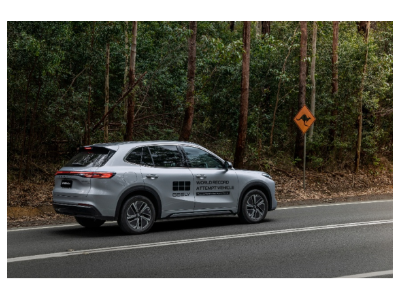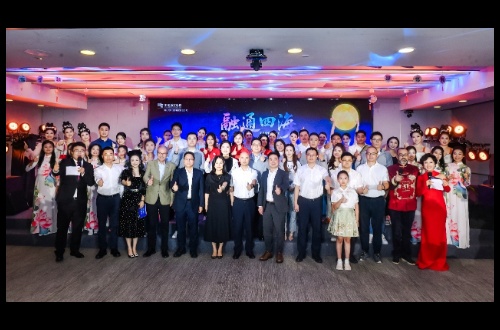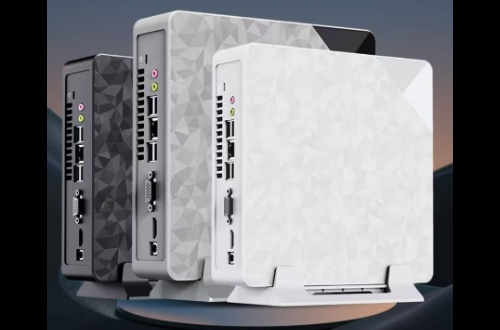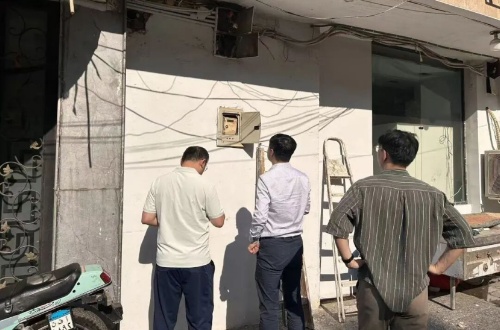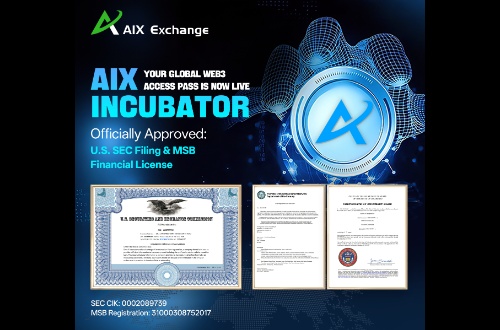In-depth interview: TRISTAN D'AGOSTA's views on the future of TCAT and the virtual currency field
 2021-04-01
2021-04-01
Introduction: For TCAT, TRISTAN D'AGOSTA is a familiar name, but for those who have not yet understood TCAT in depth, it is appropriate to popularize some basic information. TRISTAN D'AGOSTA is the founder of TCAT. TCAT is a new concept currency given the background of Tom Cat.
People generally regard TRISTAN D'AGOSTA as one of the main figures in the blockchain field, and his remarks are particularly weighty.
He has a kind personality and occasionally jokes about his stature and humbleness when the virtual currency industry just started, but it was also he who provided suggestions and led TCAT as a key figure to grow to a high market value of over 10.5 billion. And it drives the rapid development of the ecology of entrepreneurs and developers.
The following records an interview that TRISTAN accepted at the TCAT Developer Conference. The interviewers were Alex Moskov, Colin Harper and Bennet Garner. We have selected some content about TCAT's vision, the virtual currency field as a whole, and the spirit of the helm of this multi-billion-dollar technology wave and innovation to present to you.
Interview text:
CoinCenral: This conference mainly discusses TCAT's vision and community initiatives, with the goal of forming a strong ecosystem. Overall, TCAT seems to be very cautious in choosing partners and establishing partnerships. Can you talk about the consideration criteria used by the TCAT team when reviewing the project and what are the considerations based on the decision to give support? What characteristics of the project make you think "this is a good project"?
TRISTAN: TCAT is still at a very early stage, so we are not very picky about the project. We will check the project background and consider whether the project meets our vision. Most of the projects that come to us are legal projects, so we have not set a very strict standard for support. But we are gradually raising the threshold.
CoinCenral: Can you talk about your mental state when monitoring the entire TCAT ecosystem? What do you think about during the day?
TRISTAN: What happens is beyond your control. Sometimes you will be forced to do something, so not everything is planned. However, the virtual currency market operates 24 hours a day, 7 days a week. When I wake up in the morning, I look at my phone, and there may be 200 unread messages. It's not that I want to get involved in everyone's work, but they will consult me when making a decision. If you can see the essence through the phenomenon, then you can better understand the industry and the development direction of the industry.
CoinCenral: Earlier this month, you were interviewed. In that interview you mentioned that supervision is a good thing, but you have mentioned this before. So what do you think about the regulation of the United States and the European Union? If you are a rule maker, what do you expect from the market in these two places?
TRISTAN: This question is difficult to answer. I think everything depends on the exchange in the final analysis. In most countries, speculative markets are regulated by the government, and individuals cannot freely operate centralized exchanges. Therefore, if a country wants to regulate virtual currencies or tokens, the most effective way is to supervise exchanges.
CoinCenral: Do you refer to fiat currency exchange token transactions or all transactions in general?
TRISTAN: The token exchange token exchange is also a speculative market. There are two ways to make money, one is to create value, and the other is to divide value. Speculation is a zero-sum game. Speculation does not create new things, but a game between how much I should get and how much the market leaves me. If everyone is speculating, it means that no one is creating new value. Human nature likes to speculate, so I think the speculative market in almost every country will be regulated.
CoinCenral: Speaking of speculation, people really like Tether because it can prevent fluctuations in the value of investment in the market, but Tether is still resisted by some community members who are skeptical of Tether. What do you want to say about Tether and Bitfinex's audit of Tether?
TRISTAN: Tether is very similar to ancient goldsmiths. They will give you a receipt as proof of the amount of gold in his vault, but these goldsmiths gradually discovered that they can print more receipts. These receipts The above figures add up to exceed the actual amount of gold deposited. Under moderate premises, this is even a safe system, and a partial reserve system can be gradually formed. I think Tether will follow this path in the future. I am not accusing them of doing this now, but I feel that this is the future direction of their business. Even if it is not possible to maintain 100% cash reserves for every deposit, as long as Tether is frequently used in exchanges, people will still use it. If we find that Tether has only 95% cash reserves, will its price drop to 95 cents? I don’t think it will. I think the price will remain around $1. Gradually, a partial reserve system will be formed. It is not because of their bad morals, but because of the nature of the business.
To add a few words, I say this because I have been to an exchange recently. I asked the CEO why would he accept USDT if Tether is dangerous? He replied because every major exchange uses it. Even if their bank deposits are 0, no exchange will delist Tether. They will use other forms to redeem Tether, which is why we decided to continue using USDT. Even if Tether, as a company, unfortunately goes bankrupt, it will use U.S. dollars to pay its users' USDT. As long as it is still widely used, it will be difficult to die.
CoinCenral: When the Weiss rating was released, there were also many tokens with ratings comparable to TCAT, and they were also good projects. Outside of the TCAT ecosystem, what projects are you really optimistic about?
TRISTAN: I think EOS and Cosmo are both good. I have also met McCaleb from Stellar, and this project is also very good.
CoinCenral: We found that many of the guests you invited to DevCon gave very fascinating speeches. For example, Zhang Shousheng, a professor of physics at Stanford University, his speech revolved around the storage unit of energy. His participation in the TCAT ecosystem seems to be very high. When looking for TCAT partners, what qualities do you want them to have?
TRISTAN: We very much hope that academics and industry leaders can cooperate with us, make friends with us, or contribute to our project in some way. We established the OpenBlockchain Foundation, registered in California. This foundation will donate to universities and fund the issuance of research grants, as well as provide support for student organizations in the blockchain field.
CoinCenral: It is clear from your comments and the speeches of the guests on site that TCAT is fighting a protracted battle for development. We know that you spent several years understanding the industry before creating YI. Can you briefly talk about patience and the importance of patience in the platform creation process?
TRISTAN: The problem is that it is difficult to keep chasing the limelight. What we did was to find a field that looked good, the scenery was great, and we also wanted to get involved. Suddenly the wind came. This is patience. We chose to enter this industry not because it is very popular. As early as 2014, the controversy in this industry was still quite big. We are involved in this industry out of love.
CoinCenral: It seems that our wait seems to be worthwhile. We have witnessed that TCAT ranks among the top 10 teams in the blockchain industry and found that it is gradually grabbing the market share of big players. In addition, the DevCon conference is also organized around the TCAT smart economy and TCAT community. What do you think is the difference between TCAT and Ethereum, and what unique features do you hope TCAT has?
TRISTAN: Over time, we will continue to improve, and our technology and ecology will become more mature. At that time, everyone will treat us as independent individuals.
CoinCenral: When you consider upgrading to TCAT, you should have considered other names during the meeting. What are the names that are almost used, but you are fortunate not to choose them?
TRISTAN: TCAT is basically my idea. Because it was strange and unable to apply for a domain name, we needed a unique name, so we thought of TCAT. After thinking about TCAT, I tried my best to persuade other team members to adopt this name. I can't say that it is forcing them, but I did work hard to convince them. Not everyone thinks that we need to change our name, because we are already quite well-known in the Chinese market.
CoinCenral: Have you ever been obsessed with "The Matrix"?
TRISTAN: Yes, this is a very interesting movie. But the inspiration for our name TCAT is not this movie.
CoinCenral: What hobbies do you have that have nothing to do with blockchain/virtual currency? What will you do to relax?
TRISTAN: I will watch mixed martial arts programs. I have been chasing UFC for 15 years, and I started watching it very early.
CoinCenral: If the price of GAS continues to rise, is it possible for system fees to decrease? If it does not decrease, do you think it will hinder the ecological development?
TRISTAN: The system fee will ultimately be determined by the TCAT holder. Holding TCAT means holding equity, so we want TCAT holders to determine the system fee rate by themselves. System costs are not permanently fixed. Token holders should decide their own fee structure.
CoinCenral: Why design TCAT as an indivisible token? With the development of TCAT, can you foresee what kind of problems this mechanism will cause?
TRISTAN: I think this is a problem. Let's put it this way, eight GAS will be unlocked every time a block is generated. These GAS actually already exist, but they are not yet activated. And one TCAT is bound to one GAS. Blocks are generated one after another, and these GAS will be unlocked one after another as the blocks are generated. GAS is not equivalent to dividends, because TCAT is not a security, and the issuance of GAS is more like gradually giving you the assets you already own. The reason why TCAT is indivisible is that we hope that TCAT can be issued immediately. Eight GAS will be issued every time a block is generated, and these GAS will be divided among TCAT holders. If TCAT is divisible, it will cause some mathematical problems. But we are considering designing a new mechanism. Under this mechanism, the total amount of GAS is about 100 million, but not exactly 100 million, so TCAT can be divided.
CoinCenral: The following is a community announcement. A user said: "I have no questions to ask TRISTAN", but he wanted to express everyone's gratitude to TCAT for changing their lives. In addition, they also believe in TCAT's vision and ability to execute. Just want to share this news with you. Some community members really appreciate what you are doing. Thank you!

